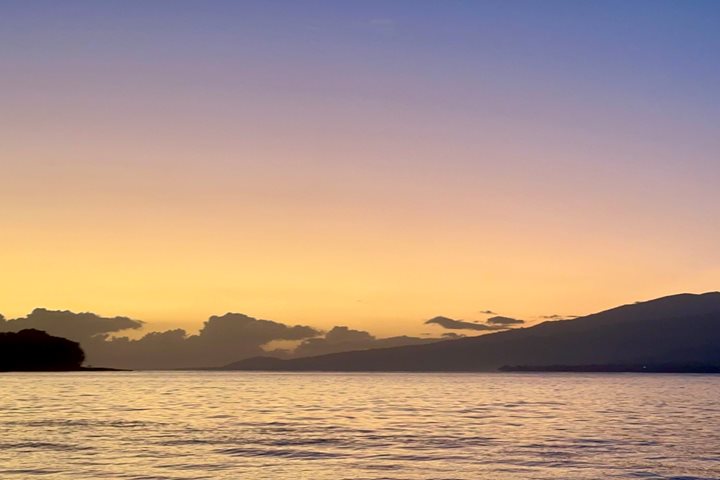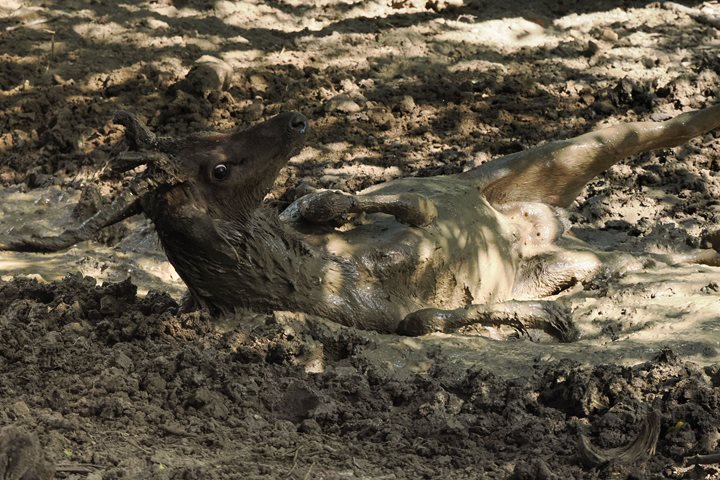At sunrise the National Geographic Orion was sailing toward the remote Kimberley region on the western coast of Australia. Today we savored a relaxing day at sea.
One of the unique qualities of an expedition is that it illuminates the treasures of the places our itinerary includes. It gives us the opportunity to learn to see and to pay attention differently. Naturalists, National Geographic photographers, and global perspective speakers empower us with new perspectives, stories and knowledge.
But the highlight of the day came to us as we were eating delicious food in our outdoor café, when a humpback whale calf breached and captured our attention.
Our Captain, who demonstrated his skill maneuvering a vessel around whales so not to disturb them, provided us with a close-up look at a young calf with its mother from the observation deck and bow of the ship.
Humpback whales migrate from the nutrient rich waters of the southern ocean to breed and give birth here in Western Australia during the winter season. This curious calf breached repeatedly to our delight. It seemed as curious about us as we were about it. Cameras set on continuous record caught the moment while our naturalists guided our eyes to watch for the twist in the breach, to find the eye of the calf, to see the white ventral pleats unique to humpback whales, and to look into the water to observe the tactile close interaction between this mother and her baby.
As the Kimberley Coast came softly into view we found ourselves among more humpback whales. Captain treated us to a scenic cruise through Yampi Sound. The sun was low in the sky and the ancient rock this region is famous for was brilliant warm hues of red, yellow, orange, and brown. The golden hour of the day lured us out to enjoy the beauty.









